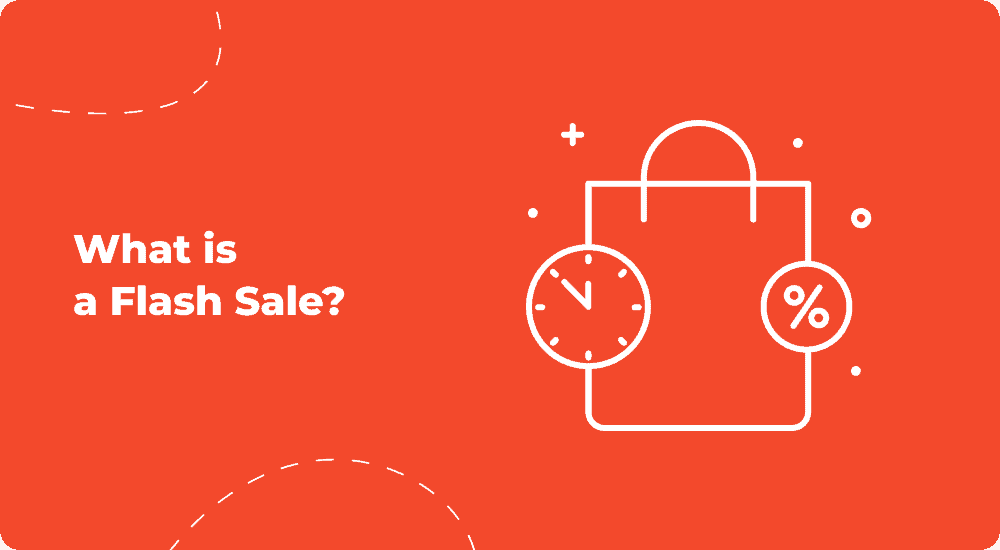In today’s fast-paced world, online flash sales have become an integral part of our shopping culture. But do we, as consumers, truly understand the technology that makes these flash sales possible and the benefits they bring to both buyers and sellers? In this article, we’ll delve into the intricacies of flash sales and explore the technology that powers these thrilling shopping experiences.
What is a Flash Sale?
A flash sale is a limited-time promotion offering products at significantly reduced prices. These sales are characterized by urgency and exclusivity, enticing consumers to make quick decisions. It’s a marketing strategy designed to create buzz and drive immediate sales.
Picture this: You’re scrolling through your favorite online store when suddenly a banner screams “FLASH SALE!” in bold, attention-grabbing letters. Your heart races as you realize the clock is ticking — these deals won’t last long! That’s the essence of a flash sale, a compelling moment of shopping frenzy.
The appeal of flash sales extends far beyond the thrill of a bargain hunt. In today’s fast-paced world, where time is of the essence, these lightning-quick promotions tap into our collective desire for instant gratification. They cater to the “I want it now” mentality, aligning perfectly with the digital age’s hustle and bustle.
Unveiling the Advantages of Online Flash Sales
Online flash sales offer numerous advantages for both consumers and businesses. Here are some key points:
- Increased sales velocity. Flash sales generate a surge in sales within a short timeframe, helping businesses quickly move inventory.
- Building customer loyalty. Regular flash sales can foster loyalty among customers who anticipate these exclusive offers.
- Clearing excess inventory. Businesses can efficiently clear out old or excess inventory through flash sales, reducing storage costs.
- Data collection. Flash sales provide valuable data on customer preferences, helping businesses tailor future offerings.
- Boosting brand awareness. Successful flash sales can create buzz around a brand, attracting new customers.
The Main Reasons why Flash Sales Can Fail
While flash sales can be powerful, there are pitfalls to avoid. Here are some common reasons for their failure:
- Poor planning. Lack of proper planning can lead to logistical and technical issues during the sale.
- Website overload. Heavy traffic can overwhelm a website, causing it to crash during the sale.
- Unattractive discounts. Inadequate discounts may not motivate consumers to participate in the flash sale.
- Misalignment with brand image. Inconsistent flash sale offerings can confuse customers about a brand’s identity.
How to Execute a Successful Flash Sale?
Follow these comprehensive steps to ensure that your flash sale goes well and keeps customers looking forward to the next one.
1. Strategic timing: create anticipation
The timing of your flash sale is crucial. Consider launching it during peak shopping hours, such as evenings or weekends, when potential customers are most likely to be online and ready to indulge in retail therapy. Furthermore, leverage special occasions like holidays, anniversaries, or product launches to add an extra layer of excitement and urgency to your sale.
2. Optimize website performance: handle the surge
Anticipate a surge in traffic during your flash sale. To prevent website crashes and customer frustration, invest in a robust infrastructure that can handle the increased load. This may involve upgrading servers, optimizing code, and utilizing Content Delivery Networks (CDNs) to ensure lightning-fast load times. A smooth and responsive website is key to retaining customers and maximizing sales.
3. Craft irresistible discounts: hook your audience
The heart of any successful flash sale lies in the discounts offered. Dive deep into your target audience’s preferences and purchasing behaviors to tailor discounts that truly resonate. Consider tiered discounts, bundle deals, or time-sensitive offers to create a sense of urgency. Be transparent about the savings customers can enjoy, as this transparency builds trust and encourages purchases.
4. Consistency is key: branding matters
While the thrill of a flash sale is in its spontaneity, consistency in branding is paramount. Ensure your flash sale promotions maintain the same look, feel, and messaging as your regular branding. Consistency builds trust and helps customers instantly recognize your flash sale when they see it.
Use the power of storytelling to connect your flash sales with your brand’s overarching narrative. Highlight how each flash sale ties into your brand’s mission or values. This creates a more immersive shopping experience and fosters a deeper connection between customers and your brand.
5. Engage and retain: beyond the sale
Your relationship with customers doesn’t end when the flash sale concludes. Use this opportunity to engage with your audience, collect valuable feedback, and nurture ongoing relationships. Send thank-you emails, ask for reviews, and provide incentives for future purchases. Building a loyal customer base is as important as the sale itself.
Advancing Online Flash Sales to New Heights

Businesses can elevate their online flash sales through the following methods:
- Streamlined inventory management. Effective management of your inventory is crucial for successful flash sales.
- Data-driven insights. Harness the power of data analytics to understand customer preferences and improve your sales strategy.
- Tailored promotions. Create unique and personalized flash sales campaigns that resonate with your audience.
- Enhanced user experience. Providing a seamless and user-friendly shopping experience is key to boosting conversion rates.
Examples of Flash Sale Success Stories
- Fashion Retailer:
Zara: Regularly offers limited-time discounts on trendy clothing, keeping customers engaged and anticipating the next sale.
- Electronics Giant:
Best Buy: Frequently launches flash sales on gadgets and electronics, attracting tech enthusiasts looking for a bargain.
- Travel Platform:
Expedia: Provides flash deals on holiday packages and hotel stays, enticing travelers to book spontaneous trips.
- Beauty Brand:
Sephora: Hosts occasional flash sales on premium beauty products, drawing in beauty aficionados seeking quality at reduced prices.
- Home Furnishings Retailer:
IKEA: Rolls out flash sales on select furniture and home accessories, encouraging homemakers to refresh their spaces at a discount.
Conclusion
In a world with short attention spans, online flash sales provide an exciting and effective way for businesses to boost sales, clear inventory, and engage customers. Remember: the key to flash sale success lies in innovation, technology, and a deep understanding of your target audience’s desires.
